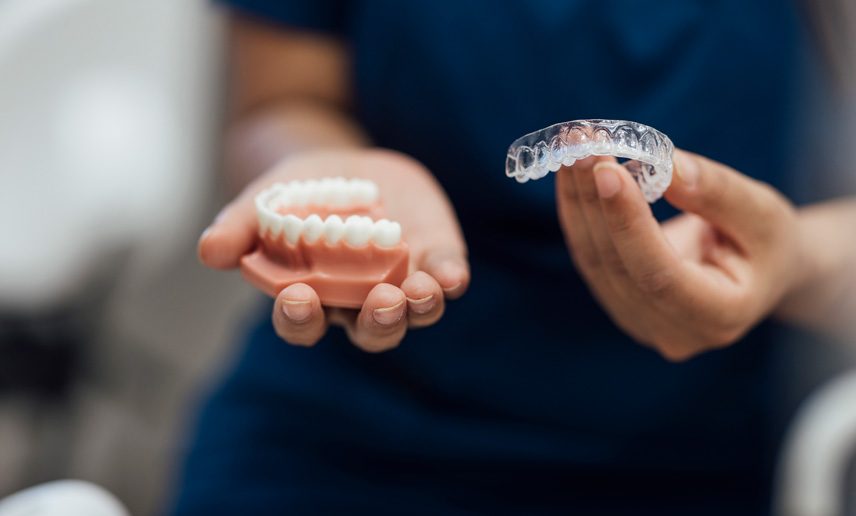Sep 24, 2025
Clear Aligners vs Braces: Which Orthodontic Solution Is Right for You?

Thinking about straightening your teeth can bring up a lot of questions. You want your smile to look great and feel comfortable, and you want a treatment that fits your life. Clear aligners and traditional braces both move teeth safely and predictably, yet they do so in different ways and suit different needs. In this guide, we break down how each option works, where they shine, and how to choose the best path for you or your child.
What are clear aligners and how do they work?
Clear aligners are custom-made trays that fit snugly over your teeth. You wear a series of aligners, each one programmed to make small adjustments that gradually guide your teeth into their planned positions.
The process usually involves:
- Digital scan and 3D planning
- A series of aligners created to follow your plan
- Wearing each set 20–22 hours a day for 1–2 weeks
- Removing them only for eating, drinking (except water), and brushing
- Regular reviews, often supported by remote monitoring
At Northern Orthodontics we provide Invisalign® and our own NorthoClear aligners. For many mild to moderate cases, aligners offer precise control with excellent aesthetics. Some complex bite corrections may still be more predictable with braces, which is why every patient is assessed individually by a Specialist Orthodontist.
How do traditional braces work and what are their benefits?
Braces use brackets and wires fixed to your teeth. Gentle pressure is applied and adjusted over time to move teeth into position. Types include:
- Metal braces: durable and efficient
- Ceramic braces: tooth-coloured for a more discreet look
- Lingual braces: fitted behind the teeth for hidden treatment
Why patients still choose braces:
- Excellent control for complex movements and bite corrections
- Always on - no risk of forgetting wear time
- Suitable for nearly all ages and clinical needs
Pros and cons at a glance
Clear aligners, advantages:
- Discreet and nearly invisible
- Removable for meals and brushing
- No food restrictions
- Fewer emergencies from breakages
Clear aligners, challenges:
- Must be worn 20–22 hours daily
- Easy to misplace when removed
- Some complex movements may be less predictable
Braces, advantages:
- Powerful for complex movements and bites
- Fixed in place - no compliance worries
- Often more efficient for certain cases
Braces, challenges:
- More visible, though ceramic or lingual reduce this
- Food adjustments needed to avoid breakages
- More effort to brush and floss around brackets
Which option fits different lifestyles?
- Busy professionals or students: Aligners blend into daily life and can be removed for meetings or music practice.
- Active teens or athletes: Aligners can be removed during sport with a mouthguard, while braces need protection with a fitted guard.
- Set-and-forget approach: Braces work 24/7 with no effort to remember wear.
- Frequent snackers: Aligners allow you to eat freely after removal; braces require diet adjustments.
- Complex cases: Braces may offer more precise control; sometimes a hybrid of both is best.
Comfort, care, and everyday practicalities
Clear aligners:
- Wear 20–22 hours daily
- Rinse before reinserting
- Brush and floss after meals, or rinse if brushing is not possible
- Store in a case during meals
Braces:
- Brush after meals with fluoride toothpaste
- Use interdental brushes around brackets
- Avoid hard, sticky, or chewy foods
- Contact your orthodontist if a bracket or wire breaks
Real experiences, real results
Patients often tell us aligners help them feel confident at school or work because they are so discreet. Parents appreciate that they can be removed for photo days or special occasions. Many teens do well with braces because the routine is simple and the results highly predictable.
How do you choose for your own needs?
Think about:
- Your goals: invisibility, speed, or maximum control?
- Your lifestyle: will you wear aligners consistently, or prefer fixed appliances?
- Your clinical needs: some movements are better with braces, others equally suited to aligners.
At your consultation we create a personalised digital plan, show you expected outcomes, and discuss costs and timeframes. We also review sports protection, flexible payments, and how to keep treatment stress-free.
Who is a good candidate for each?
- Clear aligners: great for patients who want a subtle look, are committed to wear, and have mild to moderate spacing or crowding.
- Braces: often recommended for significant crowding, impacted teeth, or bite corrections needing detailed control. Ceramic or lingual options keep treatment discreet.
Your next steps with Northern Orthodontics
We are a Specialist-led clinic serving Greater Manchester with braces, Invisalign®, and NorthoClear aligners. Using digital scans and remote monitoring, we make treatment precise and efficient.
Find the right fit for your smile
Clear aligners and braces both deliver excellent results. Aligners offer discretion and flexibility, while braces excel in control and are always working without relying on wear time. The right choice depends on your goals, lifestyle, and the movements your teeth need.
Ready to begin? Book your free consultation with a Specialist Orthodontist at Northern Orthodontics and let us design a plan that fits your life and your smile.